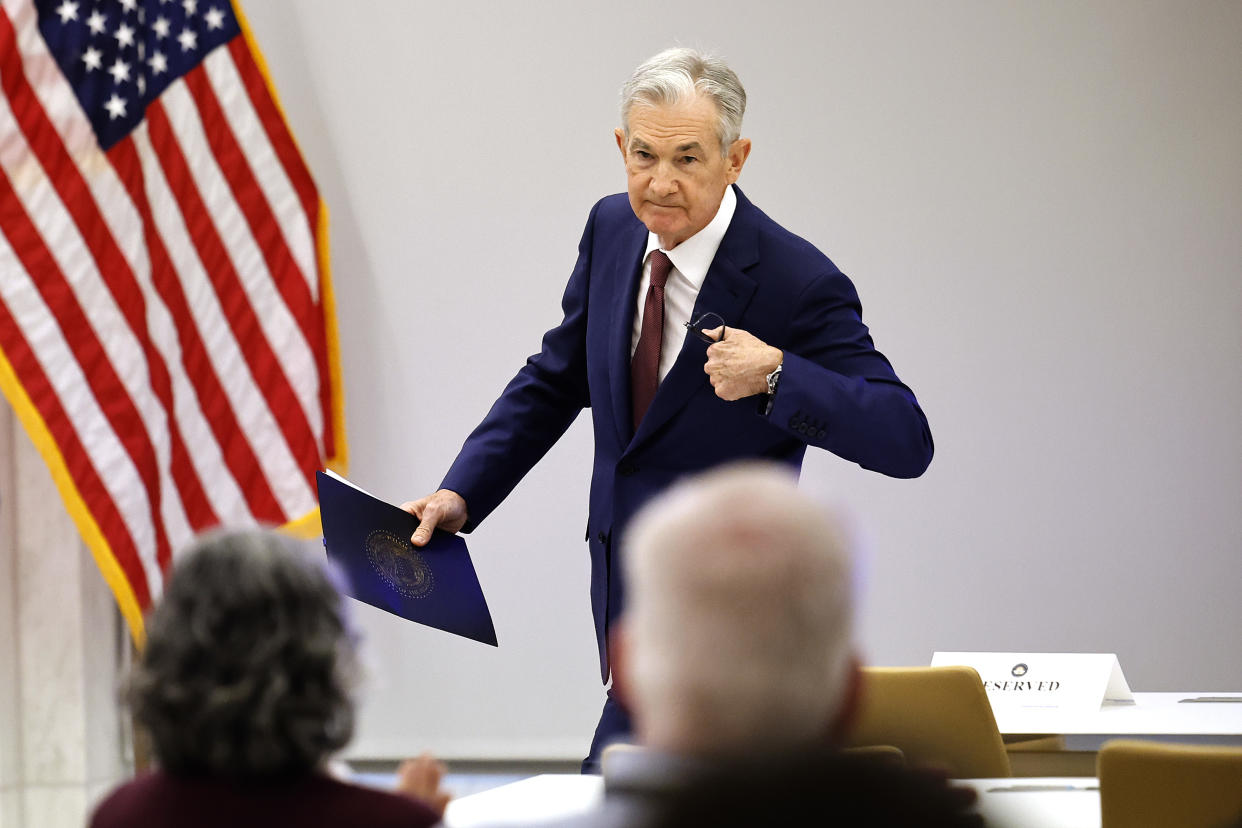Fed minutes show central bank in position to 'proceed carefully' on future rate hikes
Federal Reserve officials are in broad agreement the central bank can "proceed carefully" when it comes to future interest rate decisions, minutes from the Fed's Oct. 31-Nov. 1 meeting showed Wednesday.
"All participants agreed that the Committee was in a position to proceed carefully and that policy decisions at every meeting would continue to be based on the totality of incoming information and its implications for the economic outlook as well as the balance of risks," according to the readout from the Fed's latest meeting, which is released on a three-week lag.
Officials noted that further rate hikes would be appropriate if incoming information indicated that progress toward the Fed's 2% inflation target was insufficient. The Fed elected to keep interest rates unchanged in a range of 5.25%-5.50%, a 22-year high, at the conclusion of its meeting.
FOMC members said they expected data arriving in coming months to help clarify the extent to which inflation is continuing to come down, and whether demand is also coming down in the face of higher rates and tighter financial and credit conditions.
In a hat tip to holding rates higher for longer, the minutes noted that "all participants judged that it would be appropriate for policy to remain at a restrictive stance for some time until inflation is clearly moving down sustainably toward the Committee’s objective."
Read more: What the Fed rate-hike pause means for bank accounts, CDs, loans, and credit cards
Officials also still see upside risks to inflation, "given the possibility that inflation might prove to be more persistent than expected or that additional adverse shocks to supply conditions might occur."
Fed officials are closely watching the increase in long-term bond yields and whether they could be sustained at high levels to do the work of higher rates.
In the weeks before the Fed's Nov. 1 policy announcement, Treasury yields rose sharply with the 10-year yield hitting its highest level since 2007 in late October. Though, members noted, "it was uncertain whether this tightening of financial conditions would persist and to what extent it reflected expectations for tighter policy."
In the weeks since the meeting, Fed Chair Powell made clear that monetary policy is in "restrictive territory" and putting downward pressure on inflation, but that the central bank is keeping its options for more interest rate hikes on the table.
"If it becomes appropriate to tighten policy further, we will not hesitate to do so," Powell said in a speech before the International Monetary Fund in Washington on Nov. 9.

And there are still a number of officials who need convincing inflation will fall towards the Fed's target without further rate hikes, especially in the midst of strong growth in the third quarter, and have advocated for higher rates. Two hawks, Fed Governor Michelle Bowman and Minneapolis Fed President Neel Kashkari, have made it clear they think there is possibly more tightening to come.
Other officials, including Philadelphia Federal Reserve President Patrick Harker and Atlanta Fed President Raphael Bostic, are content to hold rates steady given progress made on declining inflation.
The latest inflation data showed continued progress on this front.
The Consumer Price Index for October showed inflation on a "core" basis, which strips out the more volatile costs of food and gas, climbed 4% over the prior year, down from September's 4.1% increase and the slowest since Sept. 2021. Still, this reading is double the Fed's inflation target of 2%.
Investors do not expect the Fed to vote for additional hikes, but the majority of the rate-setting committee penciled in one more rate hike this year when it last published forecasts in September, leaving the last meeting in mid-December a possibility.
Officials will draw up fresh estimates for the path of interest rates for the December policy meeting.
Click here for the latest economic news and indicators to help inform your investing decisions.
Read the latest financial and business news from Yahoo Finance
